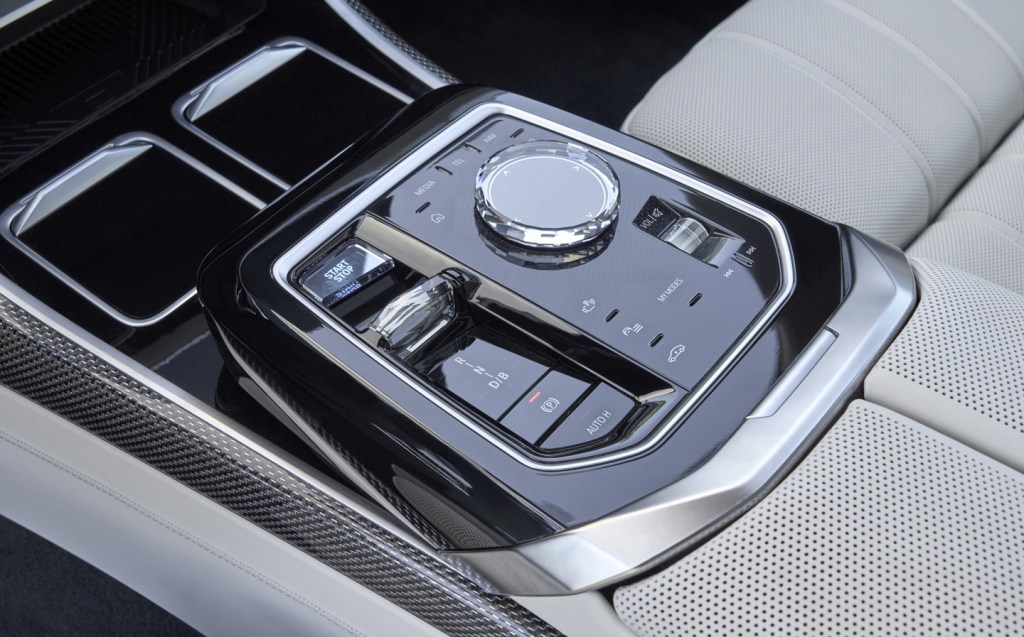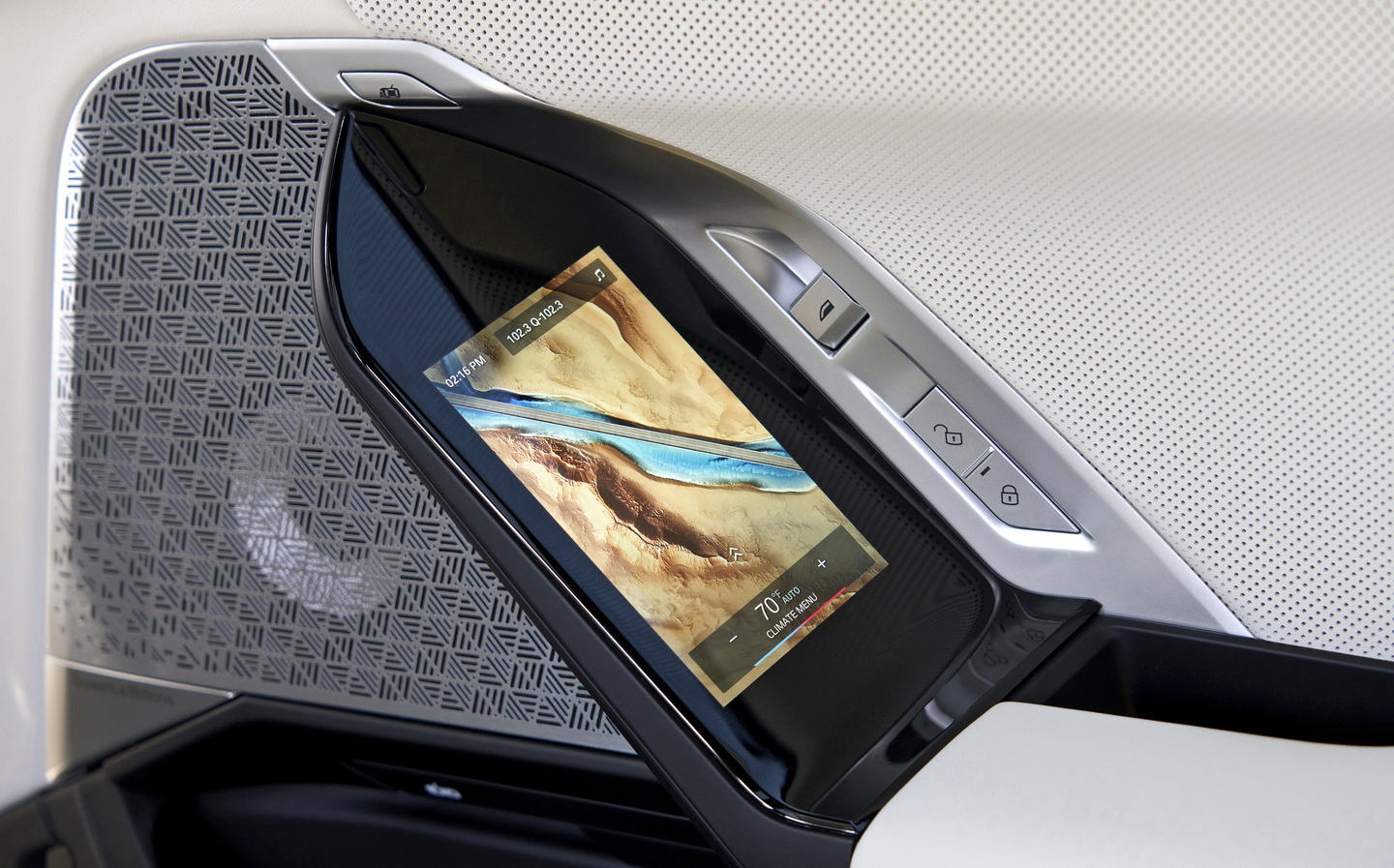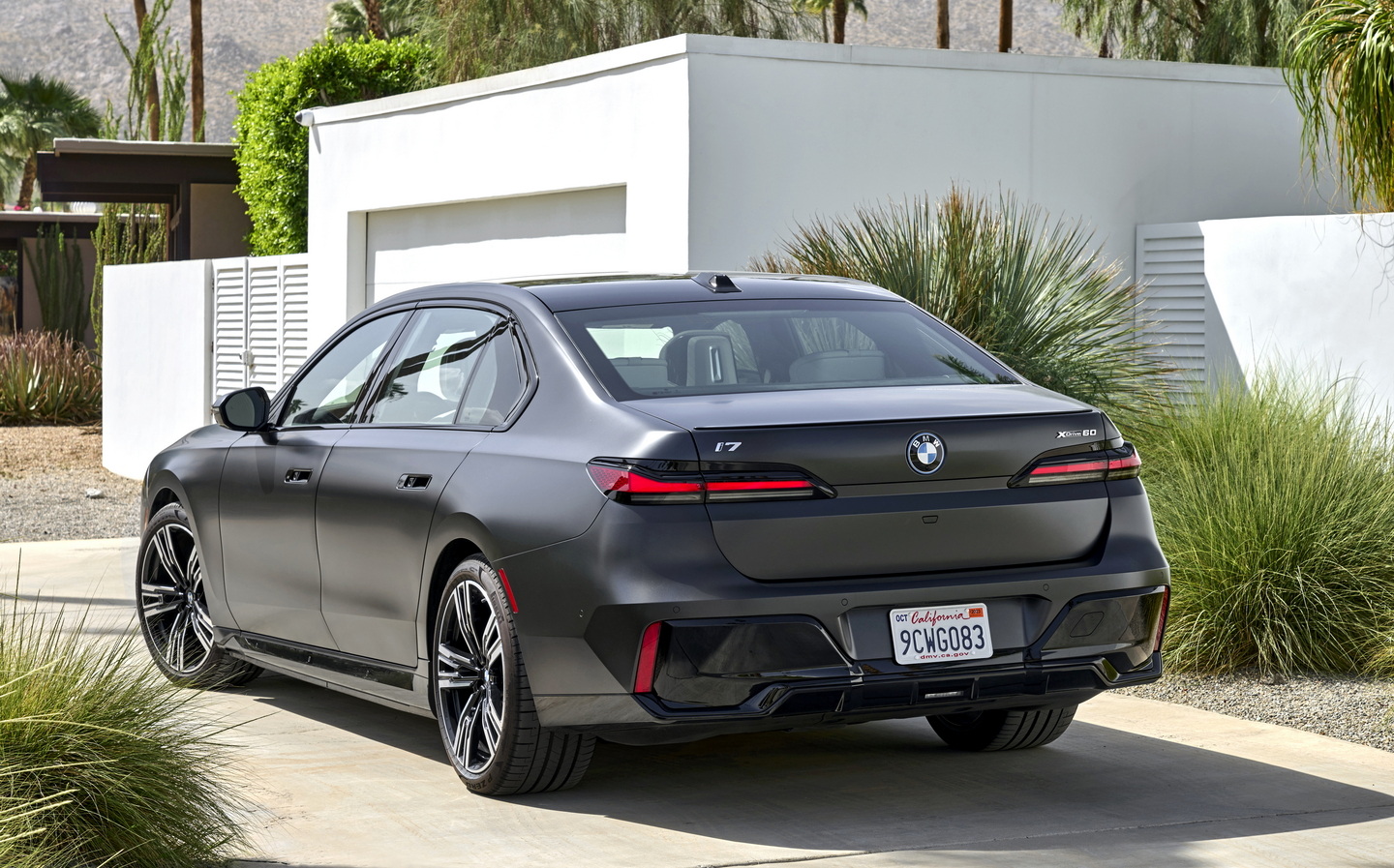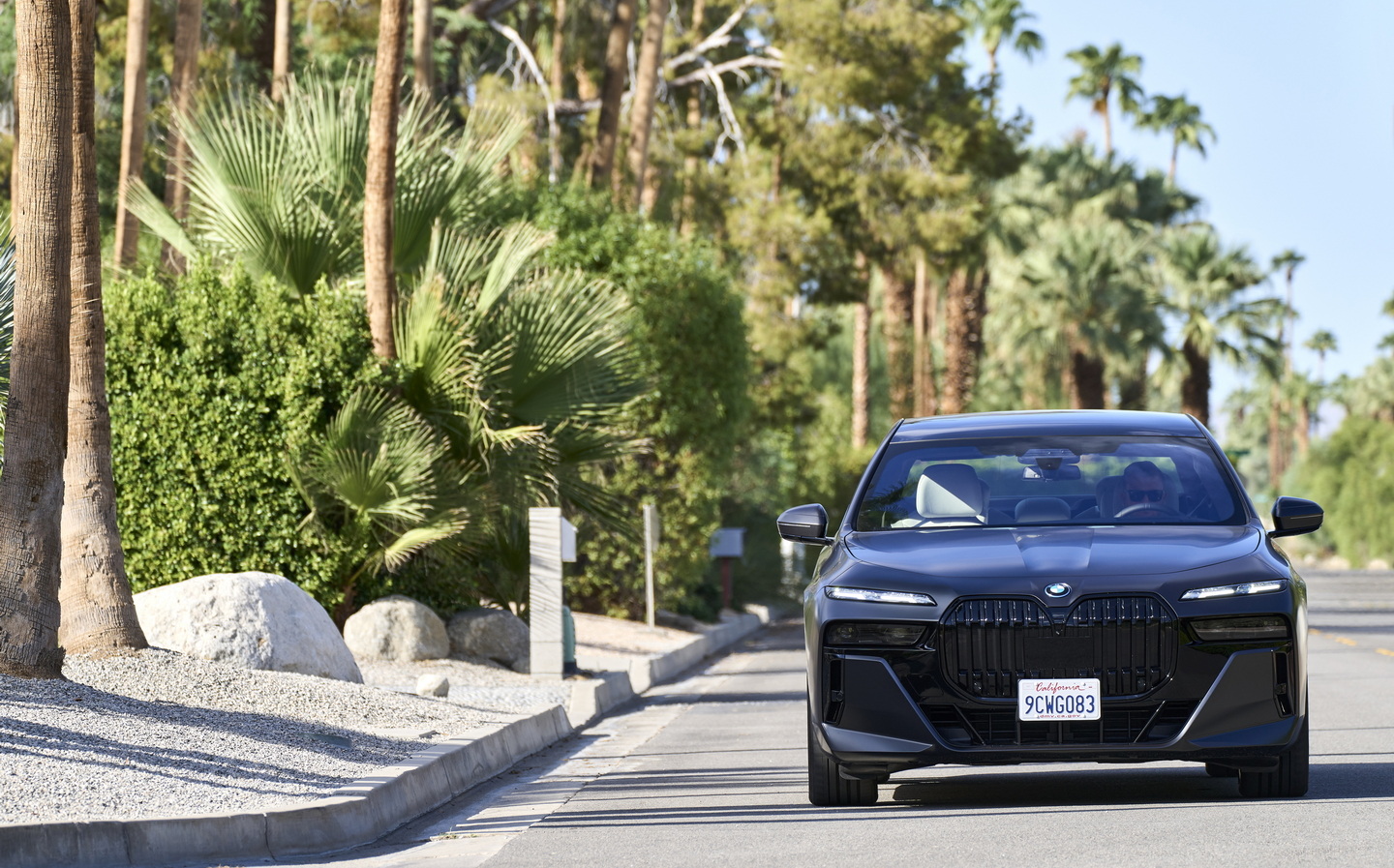BMW i7 2023 review: Tech-laden luxury in the electric age
A lucky number for some
For the last forty-five years, the 7 Series has represented the pinnacle of BMW saloon car ownership. When the first model debuted it listed features that included speed-sensitive power steering and electrically adjustable door mirrors — items that today are quite run-of-the-mill but back in 1977 wer the height of innovation.
Subsequent generations sustained the technological progress, though it’s the arrival of this latest model that is arguably the most significant as it heralds the introduction of the first pure-electric 7 Series — known as the i7.
BMW isn’t doing things by half either, equipping the i7 with a massive 101kWh battery and an electric motor on each axle. With a driving range of 388 miles, power of up to 536bhp output and a 0-62mph time of 4.7 seconds, this is one brisk — and quiet — living room on wheels.

Exterior design and rivals
In a world that has gone crazy for SUVs and genre-bending crossovers, this particular segment of the market seems to be the only one left where the traditional three-box saloon shape remains sacrosanct. Nonetheless, polarisation of opinion is on trend in the design headquarters of BMW these days, and that pervades the new 7 Series.
This time around there is no short or long wheelbase version to choose from, as BMW is sticking with a single body style for all countries. At 5,391 millimetres (a smidge over seventeen and a half feet in old money), the 7 Series is long enough by any measure and a mere 155mm shorter than the Ghost from the BMW-owned Rolls-Royce.

Differences between the plug-in hybrid 7 Series the pure-electric i7 are not easy to spot. Mostly it comes down to exterior badging, while in the M Sport specification the i7 adopts a sportier look. The monolithic design, as BMW describes it, is as much about making an impression as it is about aerodynamics. Two-tone paint, available for the first time on a BMW and set to become one of the single most-expensive options, adds a layer of potential personalisation.
Though there are other luxury saloons, for some time the biggest rivals to the BMW 7 Series have been Audi A8 and Mercedes-Benz S-Class. Then Mercedes launched the EQS, a model specifically designed to be the pinnacle of pure-electric saloons, and probably the closest rival to the BMW i7.
Impressive as its driving range may be, at 453 miles, the Merc’s aerodynamic shape divides opinion, while its rear-seat comfort and overall space aren’t as impressive as is found in the plug-in hybrid S-Class.
Despite a mid-life update, the Audi A8 now lags behind, though it is available as a plug-in hybrid. Meanwhile, Audi’s e-tron GT is an accomplished electric car, though it is more of a four-door sports car than a luxury saloon that competes with the i7.

Interior and practicality
The act of getting into (or out of) the i7 can be an occasion in itself now that BMW has introduced an automatic door option. With the simple press of a button, or tap on the screen of your BMW smartphone app, any one of the four doors can be electrically opened. That is, as long as the array of ultrasonic sensors along the car’s sills and within the doors detect that there’s nothing or nobody in the way, so there’s no risk of bumping into anybody or damaging that expensive paintwork.
Once safely ensconced inside, another press of a button quickly, and surprisingly firmly, shuts the door again. The driver’s door can also be closed by pressing on the brake pedal, while the side and rear doors can be opened or closed by the driver via the central display. The novelty value will be high for private owners but there will be chauffeur businesses that will most certainly tick that option box.
There is plenty to talk about in the rear of the i7, but we’ll start in the front as BMW still reckons that the majority of 7 Series buyers prefer to drive, rather than be driven. That does mean it’s relatively driver-focused in so far as the steering wheel is a somewhat angular affair, with a flattish bottom and deep grooves above the horizontal spokes for you to wrap your thumbs around for that commanding “ten to two” driving position.

A fully digital layout makes the dashboard seem closer to the base of the windscreen. A 12.3in instrument display flanked by a 14.9in touchscreen for BMW’s Operating System 8 infotainment, which combines to create the “Curved Display” that is now found across most of the BMW range.
What is unique to the 7 Series and i7 is the “Interaction Bar” that spans the dashboard and extends into the doors. Crystalline in its appearance, it carries capacitive buttons and does an excellent job of making the impossibly thin yet highly functional air vents invisible. It can also illuminate with different colours and patterns based on the driving modes or to create a visual warning, such as flashing red upon activation of the hazard lights.
The combination of the display and illuminated bar means there are hardly any physical buttons inside. You won’t find a gear selector either; instead there is a small rocker toggle on the centre console between the front seats. The “Crafted Clarity” glass finish for the iDrive controller won’t be to everyone’s taste, though.

In the rear there is ample headroom and legroom, the former thanks to the car’s rather boxy silhouette. An “Executive Lounge” option adds the ability to electrically slide the front passenger seat forward with a single press on the 5in touchscreen display that is integrated into both rear door pulls. You can also have the corresponding rear seat recline and elevate the passenger’s legs into something akin to a business class seat position on an airplane.
Along with both heating and cooling, and the obligatory massage functions, the additional option of a combination of Merino leather, wool and cashmere upholstery makes it seem more like a living room recliner than rear car seat.
In case boot capacity was on you mind, the BMW i7 offers 500 litres of space.
Technology and safety
BMW has thrown its full suite of safety systems at the i7 to make the electric saloon as safe as possible, particularly with regard to driving in traffic. Tapping into a total of 30 exterior sensors, the car can monitor everything that’s going on around it, both near and far.
A Driving Assistant Professional package takes much of the strain out of driving on the motorway and in stop-start traffic conditions, as it takes over the speed and maintaining distance to the vehicle in front.

In North America, the Steering and Lane Control Assist function now lets drivers take their hands off the wheel at speeds of up to 81mph on the motorway so long as conditions comply with the system parameters.
A front-facing camera watches the driver’s eyes to ensure they’re still watching the road, and not looking at a phone, which allows them to let go of the steering wheel for extended periods of time. The technology should become available in the UK and Europe when the necessary legislation allows it, but we’re making baby steps over here, with a new rule allowing ALKS (automated lane-keeping system) at up to 37mph on motorways, which means the ability to take your hands off the wheel, on its way within months. It’s encouraging to see that even more advanced technology is ready to use already.
One less essential but rather desirable bit of technology is available in the rear. BMW’s Theatre Screen is a 31in 8k display that descends from the roof to give those in the rear seats a cinema-like experience.

When it has been activated, the rear and side window blinds rise to create a darker ambience for better viewing and, if you’d rather not distract the driver with the powerful Bowers & Wilkins stereo system, dual Bluetooth headphones with independent volume control are available, too.
Equipped with Amazon Fire TV and the ability to stream your favourite YouTube shows or Netflix series via the built-in 5G sim, it means that getting from A to B, or simply waiting while the car charges, can be more entertaining.
On the subject of charging, the i7 can be topped up using DC rapid chargers at up to 195kW; enough to add 106 miles of range in only ten minutes, providing you can find a charger capable of doing so. Going from 10 to 80 per cent charge at 195kW DC can be completed in 34 minutes.
Performance, range and recharging times
The i7 xDrive60, to give it its full title, uses a 101kWh battery to feed a pair of electric motors — one on each axle — to deliver fast, powerful all-wheel-drive performance. On the front axle there is 255bhp motor with the rear gaining a more powerful 308bhp motor. Both work simultaneously to deliver consistent drive to all wheels as grip levels dictate.

Despite its 2,715kg weight the i7 can accelerate to 62 mph in only 4.7 seconds and delivery of that power is incredibly smooth. Every prod of the accelerator pedal results in a surge of forward movement.
Should you find yourself on a section of unrestricted autobahn, that digital speedo will climb all the way to its electronically limited top speed of 149mph. However, doing so will also put a noticeable dent in the driving range. BMW quotes a range of 388 miles on a full charge under normal use.
BMW has also left the door open for more potent versions of the i7 to come in time.
Ride and handling
There are certain things that people have come to expect from a BMW 7 Series: comfort, refinement and composure, for example — and the i7 delivers on all of those fronts. With an electric powertrain the expectation for it to be quiet on the move is high, but it’s the variety of noises it bars from the cabin that makes it particularly impressive.

So is the level of comfort you experience irrespective of which seat you’re in. BMW equips the i7 with an adaptive air suspension setup that includes an automatic self-levelling function that can compensate for an unevenly loaded car. It continually adjusts during the drive to ensure the optimum ride height and comfort are maintained.
In the car’s Sport setting the ride height lowers by 10mm to improve the handling, and in any mode this height reduction occurs above 75mph to help reduce drag. Conversely, if the car is travelling on less even roads, or in towns or cities littered with speed humps, it is possible to raise the car’s ground clearance by 20mm.
While the i7 isn’t exactly what you’d call short, that length isn’t always so obvious thanks to a rear-wheel steering system that at lower speeds can turn the back wheels in the opposite direction to the front wheels by up to 3.5 degrees, creating the effect of the shaving almost one metre from the car’s length.

You can hustle the i7 along a twisting ribbon of tarmac should you so desire, and it’s here that the 48-volt anti-roll stabilisation system comes to the fore, keeping the car more level than you might expect from such a plush limousine.
As capable as the i7 is though, it remains a car that’s best enjoyed for its comfort and refinement than attempting to explore the dynamic potential of its chassis as it doesn’t come with a particularly involving driving experience.
Pricing and on-sale date
The BMW i7 has a £110,455 starting price for the Excellence specification grade. Progressing to the more aggressive looking M Sport version drives the price up to £114,605 and it’s from there that you can add more optional equipment, most of which are grouped together into packs.
It is now possible to order and deliveries are expected to begin before the end of the year.
Verdict: BMW i7 review

The BMW i7 is a prime example of a truly luxurious saloon successfully transitioning to the electric age. It retains all of the expected creative comforts, mixes in a generous blend of new technology and while its styling won’t be to everyone’s taste, its driving qualities and range make it one of the most appealing prospects in its class.
Related articles
- After reading this review of the 2023 BMW i7, you might want to see our review of the smaller BMW 3 Series
- Keen to go electric? Here are the top 10 longest-range electric cars
- And don’t miss our review of the divisive BMW iX
Latest articles
- Audi S5 2024 review: Audi smells blood in battle with BMW
- F1 2024 calendar and race reports: What time the next grand prix starts and what happened in the previous rounds
- AA calls for graduated licensing scheme to prevent deaths of young, inexperienced drivers
- Porsche Macan 2024 review: Entry-level electric SUV is a marathon runner, not a sprinter, but that doesn’t affect its all-star athletic appeal
- How your 10-year-old can get behind the wheel of a Mercedes, Porsche or Bentley … and why you should do it
- Lotus Eletre 2024 review: Is the electric Lotus SUV an abomination or a class act?
- Prices for hot Nissan Ariya Nismo announced … red sill strip light included
- Return of the Renault 4: Full details and images from Paris motor show unveiling
- Elon Musk unveils ‘Cybercab’ robotaxi for claimed 2026 rollout and offers guests first rides … in controlled environment






































